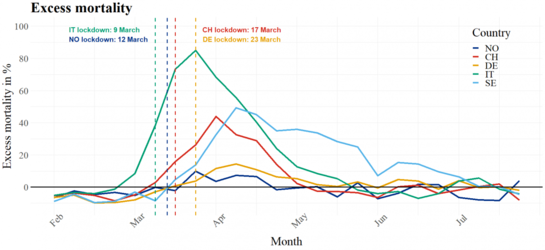I'm a bit skeptical about all the deaths being listed as covid when 1. People die everyday and 2. They may have undelrlying health issues or have died from fatalities like car accidents. As for the nurses, I think they just want to make people laugh during the difficult times. It's probably a tiny minority but my feelings are mixed.
It'll certainly be interesting to be able to compare the number of deaths, once everything is over.
3 possibilities:
1) The mortality rate is not much different compared to previous years. All signs point to this being off the menu already, though, since there already is a substantial rise in deaths that is significantly larger than previous years. Even compared to previous hikes (due to particularly bad flu seasons) the coof seems to far exceed those levels.
Which leaves us with the other two options:
2) The mortality rate rises way above the average rate then slumps down, falls below the average level of previous years and then rises back up to it. This would imply that many people who otherwise would have died in the coming months died of the coof. IE: It accelerated the deaths of people not long for this world, the average number of deaths per year has not risen.
3) The mortality rate rises way above the average rate and stays above it, sinking flowly back to the average rate. This would mean that more people died than usual.
The last one seems to be the one that we're going to get.
This is the excess mortality rate of Norway, Sweden, Italy, Switzerland and Germany for the first half of 2020:
 source
source
The average is based on the numbers of deaths from 2016-2019 and as you can see, Italy has had almost twice the number of deaths per week than usual in that timeframe. That is a very significant rise. And the rate does not fall significantly below the average, either.
While it is rather misleading to not differentiate between "died of Covid" and "died with Covid", you can still tell that there is a net rise in deaths due to Corona. "People die everyday", yes. But they have been dying at a far greater rate than even duing previous periods of high death rates in the same timeframe.
